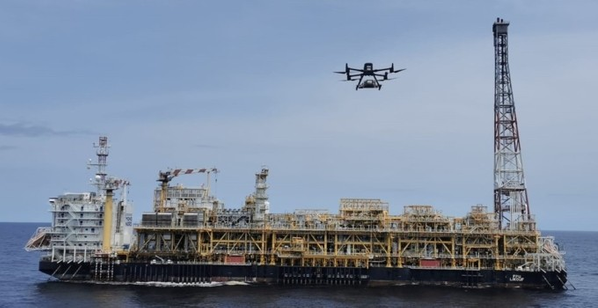
French oil major TotalEnergies said Monday it had launched a worldwide drone-based emissions detection and quantification campaign across all its upstream oil & gas operated sites, to identify, quantify, and reduce methane emissions linked to its operations.
The campaign uses AUSEA technology developed by TotalEnergies, the French National Research Center for Scientific Research (CNRS) and University of Reims Champagne Ardenne. AUSEA stands for Airborne Ultralight Spectrometer For Environmental Applications.
"AUSEA consists of a miniature dual-sensor mounted on a drone, capable of detecting methane and carbon dioxide emissions, while at the same time identifying their source. Measurements can be taken at all types of industrial facilities, whether onshore or offshore, using this technology. It supplements measurements taken using traditional techniques such as infrared cameras, ground sensors, and satellite," TotalEnergies said.
"After being successfully tested at sites in Nigeria, Italy, the Republic of the Congo, and the Netherlands, AUSEA technology is being rolled out this year at all upstream Oil & Gas sites operated by TotalEnergies. The campaign began in early March for African offshore sites, has now been launched in South America and will reach Europe this summer. The campaign is an important step towards achieving a reduction of 50% in methane emissions at company-operated sites by 2025 and of 80% by 2030 (targets in relation to 2020)," TotalEnergies said.
The AUSEA technology is also being further developed to move from a manual to an autonomous mode to increase the frequency of methane emission measurements. Its deployment will also be extended to the company's other activities, particularly at its refineries, TotalEnergies said.
According to TotalEnergies, the company halved its methane emissions at its operated sites between 2010 and 2020 by targeting all sources (reductions in flaring, venting, fugitive emissions, etc.) and introducing stricter design criteria for new facilities.
"In line with the Glasgow agreements, the company is setting new targets for its operated methane emissions for the current decade: reduction from 2020 levels of 50% by 2025 and 80% by 2030. The company has also undertaken to keep methane intensity below 0.1% across its operated gas facilities," TotalEnergies said.